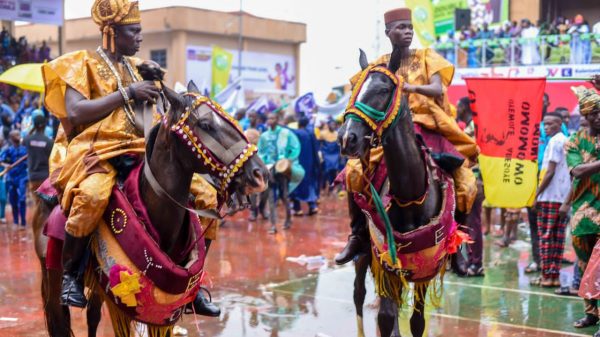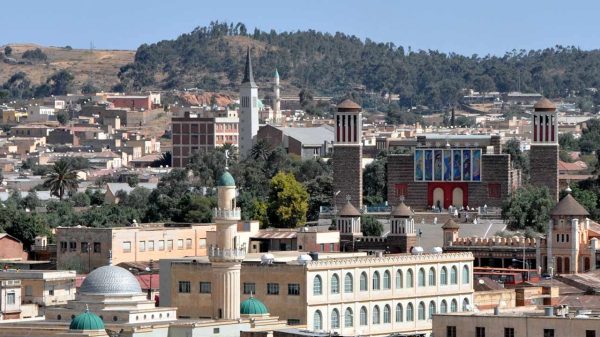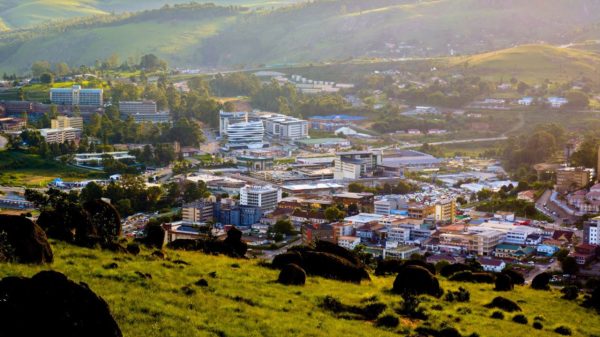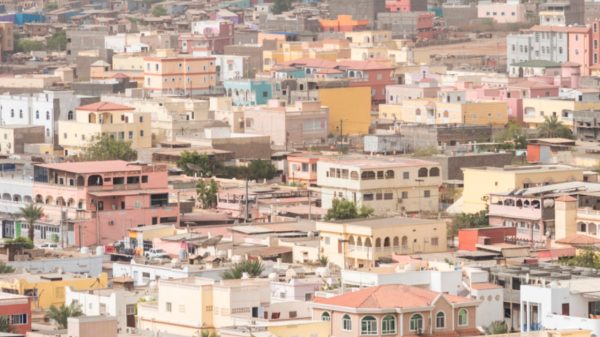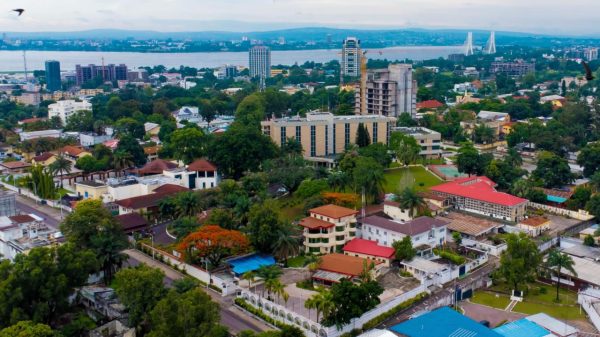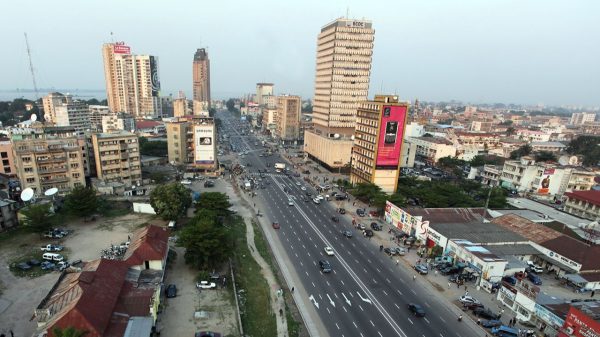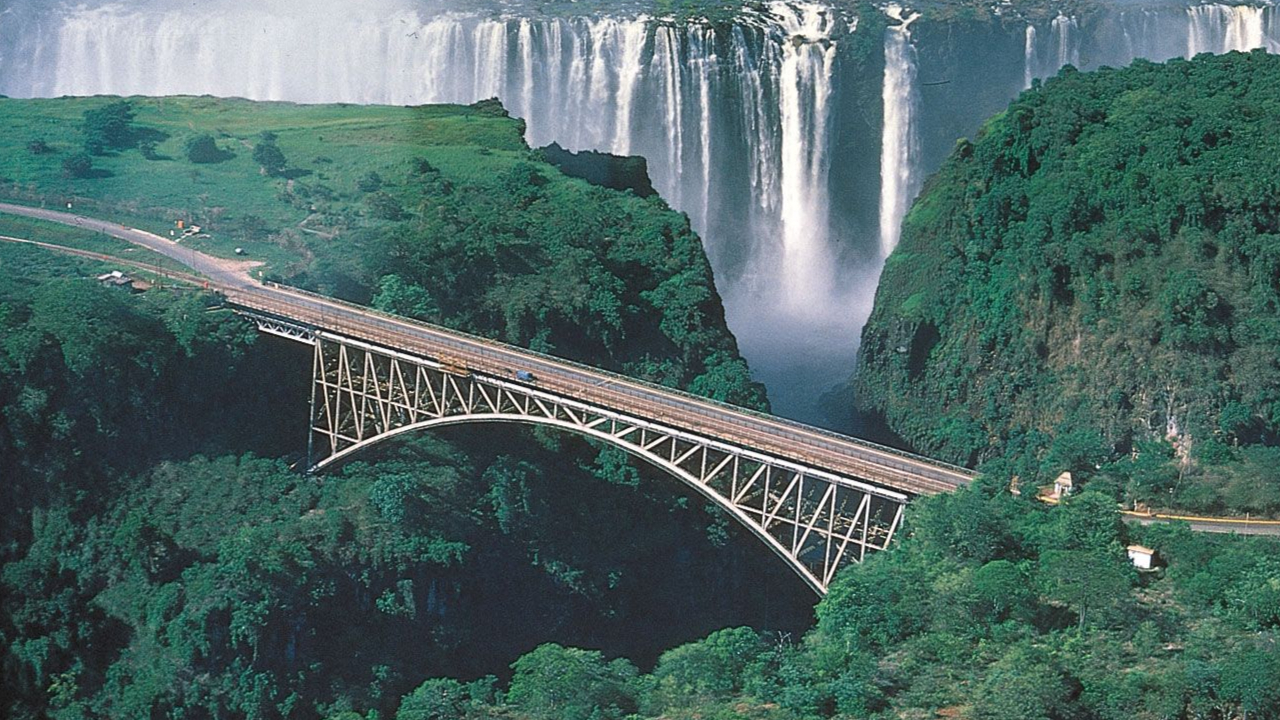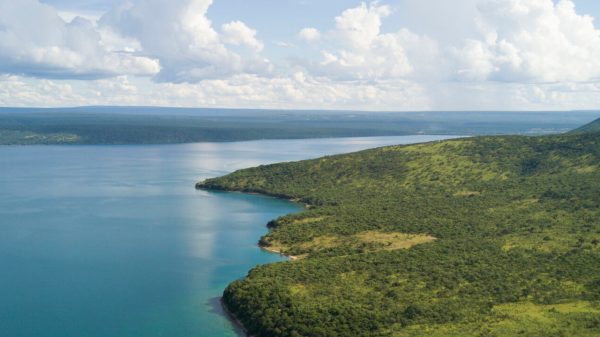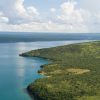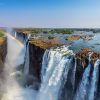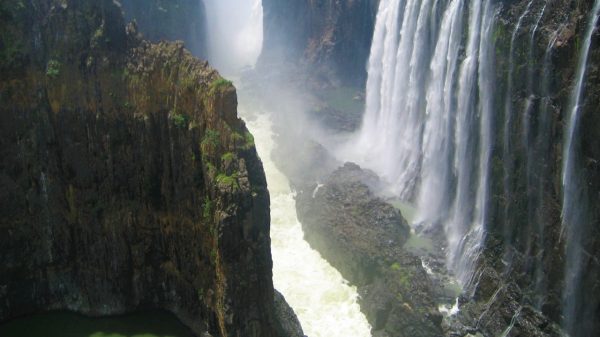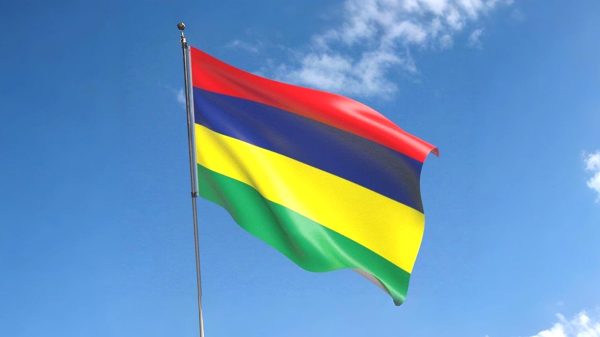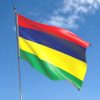Zambia, a landlocked nation nestled in the heart of southern Africa, is a country of remarkable contrasts and endless wonders.
Its vast landscapes encompass lush forests, expansive savannas, and dramatic waterfalls, while its cultural tapestry is woven from the traditions of over 70 ethnic groups. From the thunderous roar of Victoria Falls to the quiet ingenuity of termite mounds, Zambia offers a rich blend of natural marvels and historical depth. This vibrant nation is not only celebrated for its abundant wildlife and stunning scenery but also its dynamic history, thriving mining industry, and enduring cultural heritage that together tell the story of a proud and resilient people.
1. Victoria Falls (Mosi-oa-Tunya)
Victoria Falls, locally known as “Mosi-oa-Tunya” or “The Smoke That Thunders,” stands as one of the most magnificent natural spectacles in the world. Spanning an impressive width of approximately 1,708 meters (5,604 feet) and dropping 108 meters (354 feet) into the chasm of the Zambezi Gorge, the falls create a continuous cascade that produces an almost constant, thundering roar. The spectacular mist generated by the falling water often forms vivid rainbows, contributing to the falls’ mystique and beauty. This awe-inspiring site not only draws tourists from around the globe but also holds cultural and spiritual significance for local communities, who have revered it for centuries as a symbol of nature’s overwhelming power and beauty. The sheer volume of water, combined with its dramatic geological setting, makes Victoria Falls a testament to the dynamic forces of nature. Local legends and historical narratives further enrich its story, making it a central icon in Zambia’s natural and cultural heritage.
2. Lake Kariba
Lake Kariba is a monumental man-made reservoir formed in the 1950s by the construction of the Kariba Dam on the mighty Zambezi River. Covering an expansive area of about 5,580 square kilometers (2,150 square miles) and stretching nearly 223 kilometers (139 miles) in length, it holds the title of the world’s largest reservoir by volume. This colossal body of water not only plays a pivotal role in hydroelectric power generation for Zambia and Zimbabwe but also supports a thriving fishing industry, with kapenta—a small, sardine-like fish—being a major catch. The lake’s tranquil waters and scenic vistas attract both local fishermen and international tourists, who are eager to witness its unique aquatic ecosystem and abundant wildlife. In addition, Lake Kariba has spurred local economic development and has become a focal point for recreational activities, making it an essential element of Zambia’s natural and economic landscape. The creation of the lake also brought significant changes to the region’s ecology and communities, marking a new chapter in Zambia’s history of development and resource management.
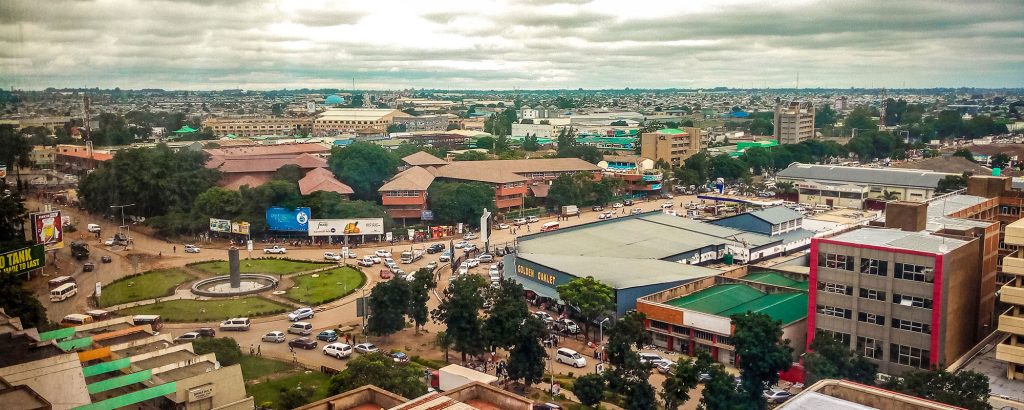
3. Kalambo Falls
Kalambo Falls is an extraordinary waterfall situated on the border between Zambia and Tanzania, known as Africa’s second-highest uninterrupted waterfall with a staggering drop of 221 meters (725 feet). The sheer power of the cascading water against the rugged cliffs creates a breathtaking display of nature’s force. Beyond its visual splendor, Kalambo Falls is steeped in historical significance, as archaeological excavations in the area have revealed evidence of human habitation dating back more than 250,000 years. These findings offer rare insights into early human life and migration patterns on the African continent. The falls and their surrounding environment provide a unique natural laboratory for scientists and historians alike, who continue to uncover clues about prehistoric human activities. The raw beauty of Kalambo, combined with its archaeological importance, renders it a must-visit destination for those interested in both nature and history, representing a dynamic intersection of natural wonder and cultural heritage.
4. Kafue National Park
Kafue National Park, covering an impressive area of roughly 22,400 square kilometers (8,650 square miles), is Zambia’s largest national park and one of the oldest protected areas in Africa, having been established in 1924. This vast expanse of land encompasses a wide variety of habitats, including dense miombo woodlands, expansive grasslands, and intricate wetlands, all of which support a rich diversity of flora and fauna. Home to majestic elephants, stealthy lions, elusive leopards, and the unique Kafue lechwe antelope, the park is a sanctuary for wildlife enthusiasts and conservationists alike. Its mosaic of ecosystems also plays a critical role in preserving ecological balance and supporting local communities through eco-tourism initiatives. The park’s natural corridors facilitate animal migrations and genetic exchange, making it a vital component of Zambia’s environmental conservation strategy. Over the decades, Kafue has not only contributed to scientific research and biodiversity conservation but has also become an emblem of Zambia’s commitment to protecting its natural heritage.
5. Rich Biodiversity
Zambia’s ecosystems boast an exceptional range of biodiversity, making it one of the most biologically diverse regions in Africa. With approximately 242 species of mammals and 757 species of birds recorded throughout the country, the natural world in Zambia is both vibrant and varied. Among the many inhabitants of this rich environment are significant populations of the endangered African wild dog, whose presence highlights the importance of ongoing conservation efforts. Zambia’s diverse habitats—from its expansive national parks and game reserves to its remote wetlands and woodlands—provide vital refuge for both common and rare species. This impressive biodiversity supports ecological balance and contributes to the country’s allure as a premier destination for wildlife tourism and research. Ongoing conservation initiatives aim to protect these species and ensure that future generations can continue to benefit from and appreciate Zambia’s natural wealth. The nation’s dedication to preserving its unique ecosystems is reflected in its robust network of protected areas and community-led conservation programs, which together maintain the ecological integrity of this remarkable landscape.
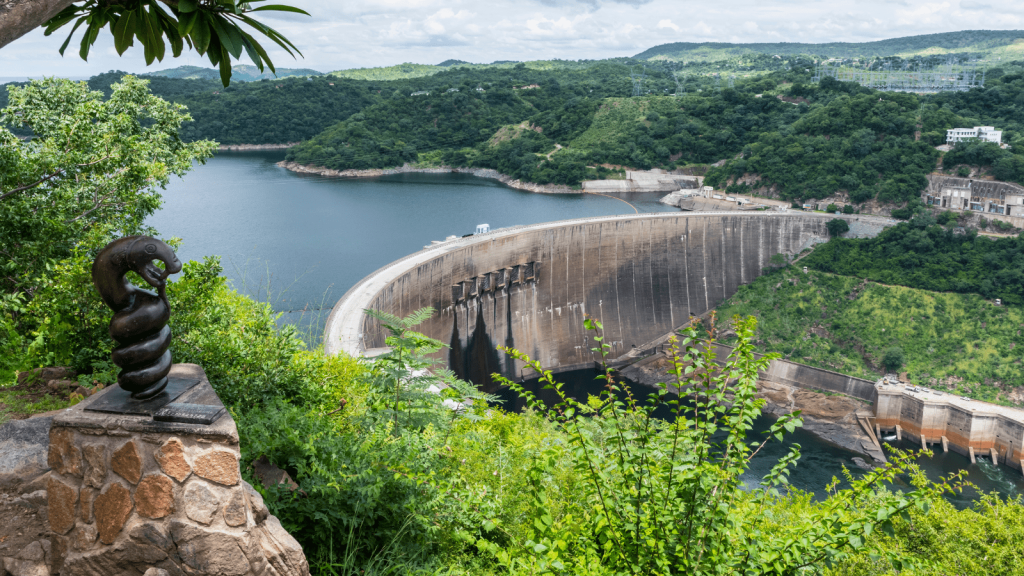
6. Cultural Diversity
Cultural diversity is at the heart of Zambia’s national identity, with over 70 distinct ethnic groups contributing to a vibrant mosaic of languages, traditions, and customs. Each group brings its own unique cultural expressions, from traditional music and dance to art and folklore, creating a rich tapestry that is celebrated across the nation. Festivals and ceremonies are common throughout the year, serving as both a means of preserving cultural heritage and a way to foster unity under the national motto “One Zambia, One Nation.” This motto encapsulates the spirit of togetherness despite the nation’s diverse ethnic backgrounds. The interplay of various cultural practices has led to a dynamic society where heritage and modernity coexist harmoniously. Local communities actively maintain their ancestral traditions while also embracing contemporary influences, ensuring that Zambia’s cultural legacy remains both relevant and vibrant in a rapidly changing world.
7. Official Language
While Zambia recognizes English as its official language, facilitating communication in education, government, and business, the nation is also home to numerous indigenous languages that reflect its rich cultural diversity. Among these, Bemba, Nyanja (Chewa), and Tonga are widely spoken. Bemba serves as a lingua franca in the northern and central regions, Nyanja is prevalent in Lusaka and the Eastern Province, and Tonga is commonly spoken in the Southern Province. The use of these indigenous languages alongside English underscores Zambia’s commitment to preserving its cultural heritage while promoting national unity.
8. Independence
Zambia’s journey to independence is a pivotal chapter in its national history. On October 24, 1964, the nation emerged from the era of British colonial rule, transitioning from its former identity as Northern Rhodesia to become the independent Republic of Zambia. This momentous occasion is celebrated annually on Independence Day, a time when the nation comes together to reflect on its struggle for freedom and the sacrifices made by its forebears. The day is marked by parades, cultural performances, and speeches that recount the long and arduous journey to sovereignty. The independence movement, fueled by the desire for self-determination and national dignity, transformed Zambia’s political landscape and set it on a path toward economic and social development. The celebrations not only honor the historical achievements but also inspire ongoing efforts to build a nation that reflects the aspirations and unity of its people.
9. Copper Production
Zambia’s economy is significantly bolstered by its vast mineral wealth, with copper production playing a central role in the nation’s industrial output. As Africa’s second-largest copper producer, after the Democratic Republic of the Congo, Zambia is recognized as one of the top ten copper-producing nations globally. The Copperbelt region, in particular, has been a focal point of extensive mining activities for decades, driving economic growth and generating substantial export earnings. This thriving mining sector has not only provided employment for thousands of Zambians but has also spurred the development of related industries, such as manufacturing and infrastructure. The historical and ongoing contributions of copper mining have shaped the country’s economic landscape, influencing both its domestic policies and its position in the global market. Despite challenges related to market fluctuations and environmental impacts, Zambia’s commitment to sustainable mining practices continues to ensure that its rich mineral resources remain an integral part of the nation’s development strategy.
10. Flag Symbolism
The Zambian flag is a vibrant emblem of national pride and cultural symbolism. Officially adopted on October 24, 1964, coinciding with the nation’s independence from British colonial rule, the flag’s design reflects Zambia’s rich heritage and aspirations. Dominated by a green field, the flag symbolizes the country’s abundant natural vegetation and agricultural potential. Positioned near the fly end are three vertical stripes in red, black, and orange. Red represents the struggle for independence and the sacrifices made by the nation’s forefathers; black symbolizes the indigenous people of Zambia; and orange stands for the country’s rich mineral resources and economic potential. Soaring above these stripes is an orange African fish eagle, a powerful symbol of freedom and aspiration. This majestic bird metaphorically represents the nation’s resilience and its ability to rise above challenges, inspiring a collective spirit of determination and unity.
11. Termite Mounds
Across the vast savannas and rural landscapes of Zambia, termite mounds stand as extraordinary natural structures that highlight the ingenuity of nature. These mounds, some of which can reach heights of up to 7 meters (approximately 23 feet), are meticulously constructed by small yet industrious insects. Termites design these towering structures with intricate internal networks that regulate temperature and humidity, ensuring a stable environment for the colony. Beyond their remarkable engineering, termite mounds contribute significantly to the ecosystem by enhancing soil fertility and serving as microhabitats for a variety of other organisms. Their presence is an indicator of a healthy ecosystem, playing a crucial role in nutrient recycling and soil aeration. For local communities and researchers alike, these mounds provide fascinating insights into natural architecture and the complex interactions within African savannas. Their resilience and efficiency underscore the delicate balance between nature and its inhabitants, serving as a living testament to the wonders of natural design.
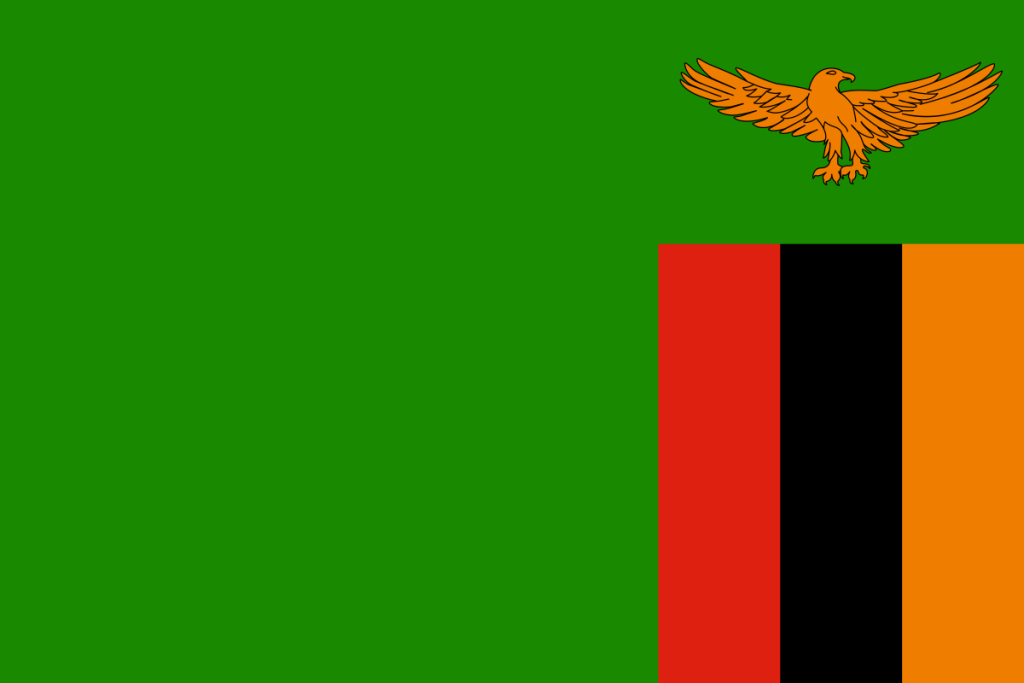
12. Lake Tanganyika
Although primarily renowned for its impressive presence in Tanzania, Burundi, and the Democratic Republic of the Congo, Lake Tanganyika also touches a small part of Zambia’s border. This ancient lake is the world’s second-deepest and second-largest by volume, with depths reaching approximately 1,470 meters (4,823 feet). Estimated to be around 10 million years old, Lake Tanganyika is a living fossil, harboring a unique ecosystem that is home to hundreds of endemic species, including a wide variety of cichlid fish. The lake’s crystal-clear waters and diverse aquatic life make it a focal point for scientific research and ecotourism. Its rich biodiversity provides important insights into evolutionary biology and the dynamics of freshwater ecosystems. Moreover, the lake supports local fisheries and livelihoods, while its scenic beauty attracts visitors seeking both adventure and relaxation. As such, Lake Tanganyika stands as a testament to the enduring natural heritage of the region, underscoring the intricate balance between ancient geological processes and modern ecological systems.
13. Traditional Ceremonies
Zambia’s cultural identity is vividly expressed through its numerous traditional ceremonies, which serve as living celebrations of heritage, history, and community spirit. One of the most notable is the Kuomboka ceremony of the Lozi people in the Western Province, marking the symbolic migration of the Litunga (king) from the flood-prone plains of the Zambezi River to higher, safer ground. This event is not merely a seasonal ritual but a profound cultural celebration featuring elaborate ceremonies, traditional music, energetic dance performances, and the ceremonial journey on the iconic Nalikwanda barge. Equally vibrant is Ukusefya pa Ngwena, celebrated by the Ila people, which honors the crocodile as a symbol of nature’s power and the spiritual connection between communities and their environment. Both ceremonies are steeped in symbolism, representing the resilience and unity of their people while preserving historical narratives and spiritual beliefs for future generations.
14. Fruit Bat Migration
Every year, Kasanka National Park in Zambia becomes the stage for one of nature’s most extraordinary events—the migration of millions of straw-colored fruit bats. Between October and December, these remarkable mammals converge in the park’s swamp forests, creating what is recognized as the world’s largest mammal migration by sheer numbers. Estimates suggest that up to 20 million fruit bats may gather in the park during this period, filling the skies with their graceful flight. This natural phenomenon is not only a spectacular visual display but also plays a critical role in the ecosystem, as these bats are vital pollinators and seed dispersers. The migration attracts researchers, ecologists, and wildlife enthusiasts from around the world, all eager to study and experience this unique event. Furthermore, the fruit bat migration has significant implications for local tourism and conservation initiatives, underscoring the interconnectedness of natural processes and human appreciation of biodiversity.
15. Geographical Position
Zambia’s central location in south-central Africa is a defining feature of its identity, positioning the country as a natural crossroads for culture, trade, and biodiversity. Landlocked yet bordered by eight nations—the Democratic Republic of the Congo to the north; Tanzania to the northeast; Malawi to the east; Mozambique to the southeast; Zimbabwe to the south; and Botswana, Namibia, and Angola to the west and southwest—Zambia occupies a strategically important position in the region. This centrality has facilitated vibrant cultural exchanges and dynamic economic interactions, as trade routes crisscross the country, linking remote communities with international markets. The geographical diversity, ranging from high plateaus to expansive river valleys, not only supports a wide range of ecosystems but also influences the climate and agricultural practices across the nation. Zambia’s borders have historically been conduits for migration, commerce, and cultural exchange, reinforcing its role as a melting pot of ideas and traditions. This strategic position continues to bolster regional cooperation and economic development, ensuring that Zambia remains a key player in the socio-economic landscape of southern Africa.
Subscribe to our Newsletter
Stay updated with the latest trends in African Pop Culture!



